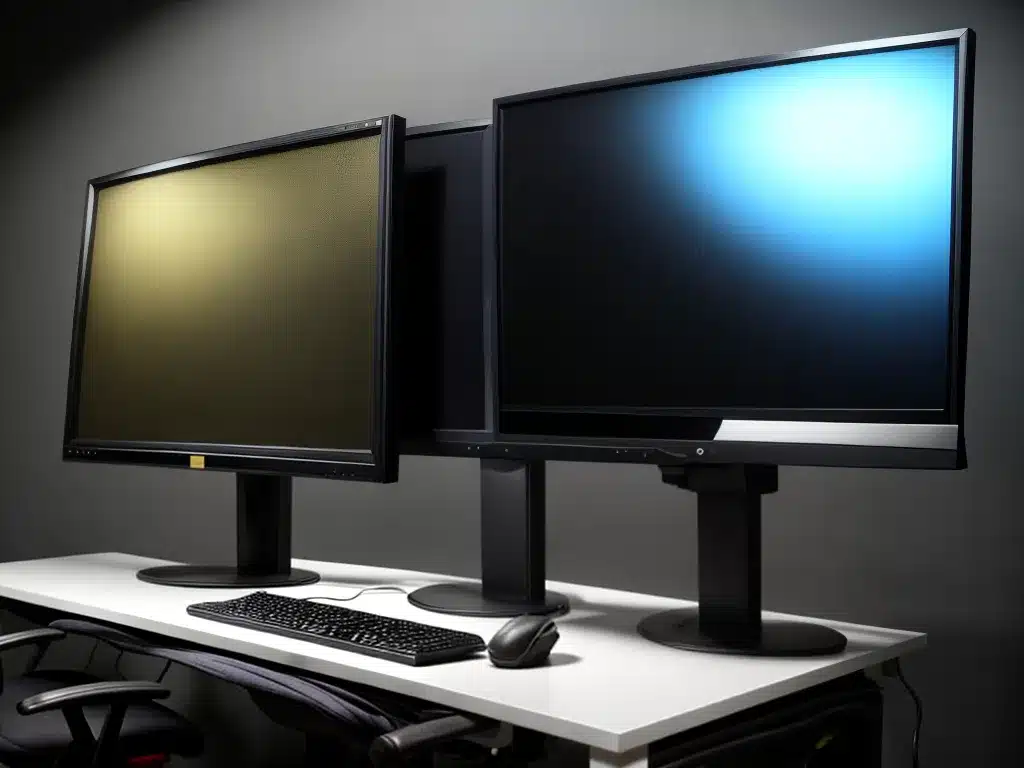
A dim or discolored monitor screen can be frustrating. Here are some potential solutions to try:
Check Display Settings
The first thing I do when my monitor looks dim or discolored is check the display settings.
Brightness and Contrast
I go to the display settings and make sure brightness and contrast are set to an appropriate level. Often the brightness may have been turned down too far or the contrast adjusted incorrectly.
I slowly increase the brightness setting while viewing my desktop to find a comfortable level. For the contrast, I adjust it until I get blacks looking black while still maintaining good detail.
Color Temperature
If adjusting brightness and contrast alone doesn’t fix a discolored monitor, I look at the color temperature setting. Most monitors allow you to choose a preset color temperature like warm, normal, or cool.
I try the different presets to find the one that makes whites look truly white. Warm settings make whites reddish, while cool settings give a bluish tint.
RGB Color
For more advanced color correction, I manually adjust the RGB color settings.
First, I set red, green, and blue to their midpoint values. Then I tweak each one up or down while viewing a white background until it looks neutral.
This usually improves discoloration better than just using the color temperature presets.
Check Video Cable Connection
A loose or damaged video cable can cause display issues on a monitor.
I make sure the video cable running from my computer to my monitor is securely plugged in at both ends. If it’s loose, pushing it firmly into the port might improve the connection.
Trying a different video cable could also fix the problem if the original one is defective. Swapping in a known good cable tests if the issue is with the cable.
Update Graphics Drivers
Outdated, corrupt, or missing graphics drivers can sometimes lead to monitor display problems.
I go to the graphics card manufacturer’s website and download the latest drivers for my specific model. I uninstall the old drivers, reboot my computer, and do a fresh install of the new drivers.
Keeping my graphics drivers updated ensures maximum compatibility and performance for my monitor.
Test Monitor on Another Computer
If I’ve tried the above steps and my monitor is still dim or discolored, I connect it to another computer if possible.
Testing it on a different device helps determine if the issue is with the monitor itself or my original computer.
If the display looks fine on a second computer, then I know the problem lies with the graphics output from my original machine. But if it remains dim on the other computer, then it indicates a problem with the monitor.
Check for Backlight Issue
LCD monitors use a backlight to illuminate the screen. If the backlight starts failing, it can cause the display to look dim even at full brightness.
I open the monitor menu and disable any eco-mode settings which reduce backlight intensity. If that doesn’t work, the backlight may need service from a repair shop.
For older CCFL backlit monitors, I check that the backlight tubes are lighting up. If not, a new inverter board or tubes may be needed.
Consider Replacing Monitor
If I’ve tried all applicable troubleshooting without success, the monitor may simply be reaching the end of its lifespan.
LCD panels gradually decline in brightness over years of use. Dead pixels can also multiply, causing discoloration.
At that point, I look at buying a new monitor. Prices have dropped significantly, making replacement a more viable option.
I research monitors with good owner reviews before selecting a replacement. Looking for a warranty of at least 1-3 years is recommended.












